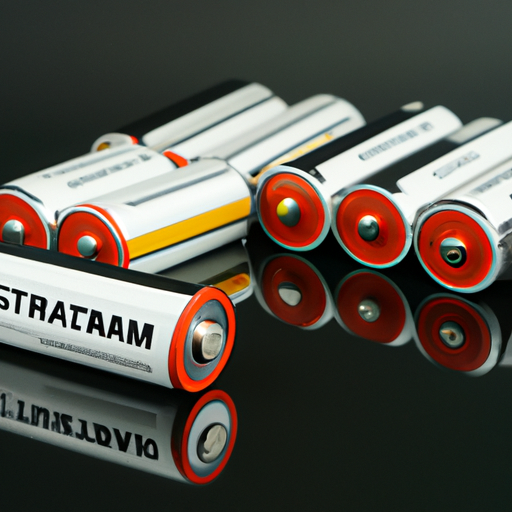Title: A Comprehensive Comparison of Mainstream Lithium Battery Models

1. Lithium Cobalt Oxide (LiCoO2): Lithium Cobalt Oxide batteries, also known as lithium-ion cobalt batteries, are one of the earliest and most widely used lithium battery chemistries. They offer high energy density, making them suitable for applications where compact size and lightweight are crucial. However, LiCoO2 batteries have limited thermal stability and are prone to thermal runaway, which can lead to safety concerns.
2. Lithium Iron Phosphate (LiFePO4): Lithium Iron Phosphate batteries, or LiFePO4 batteries, are known for their excellent thermal stability and safety characteristics. They have a lower energy density compared to LiCoO2 batteries but offer a longer cycle life, making them ideal for applications that prioritize safety and longevity, such as electric vehicles and renewable energy storage systems.
3. Lithium Manganese Oxide (LiMn2O4): Lithium Manganese Oxide batteries, also called lithium-ion manganese batteries, strike a balance between energy density and safety. They have a higher thermal stability than LiCoO2 batteries and a lower cost than LiFePO4 batteries. LiMn2O4 batteries are commonly used in power tools, medical devices, and electric bikes.
4. Lithium Nickel Manganese Cobalt Oxide (LiNiMnCoO2): Lithium Nickel Manganese Cobalt Oxide batteries, or NMC batteries, are a relatively newer lithium battery chemistry that combines the advantages of LiCoO2 and LiMn2O4 batteries. NMC batteries offer high energy density, improved thermal stability, and a longer cycle life. They are widely used in electric vehicles, portable electronics, and grid energy storage systems.
5. Lithium Titanate (Li4Ti5O12): Lithium Titanate batteries, or LTO batteries, are known for their exceptional cycle life, fast charging capabilities, and excellent thermal stability. While they have a lower energy density compared to other lithium battery models, LTO batteries are highly durable and can withstand extreme temperatures. They are commonly used in electric buses, energy storage systems, and applications that require rapid charging.
6. Lithium Nickel Cobalt Aluminum Oxide (LiNiCoAlO2): Lithium Nickel Cobalt Aluminum Oxide batteries, or NCA batteries, are primarily used in electric vehicles due to their high energy density and excellent power output. NCA batteries offer a longer driving range and faster charging times compared to other lithium battery models. However, they have lower thermal stability and are more expensive to manufacture.
Conclusion: As the demand for energy storage solutions continues to rise, the lithium battery market has witnessed the emergence of various mainstream models, each with its own unique characteristics and advantages. From the high energy density of LiCoO2 batteries to the safety and longevity of LiFePO4 batteries, and the balance between energy density and cost in LiMn2O4 batteries, there is a lithium battery model suitable for every application. Understanding the differences between these mainstream lithium battery models is crucial for selecting the most appropriate solution based on specific requirements, whether it be for electric vehicles, renewable energy storage, or consumer electronics.
Title: A Comprehensive Comparison of Mainstream Lithium Battery Models

1. Lithium Cobalt Oxide (LiCoO2): Lithium Cobalt Oxide batteries, also known as lithium-ion cobalt batteries, are one of the earliest and most widely used lithium battery chemistries. They offer high energy density, making them suitable for applications where compact size and lightweight are crucial. However, LiCoO2 batteries have limited thermal stability and are prone to thermal runaway, which can lead to safety concerns.
2. Lithium Iron Phosphate (LiFePO4): Lithium Iron Phosphate batteries, or LiFePO4 batteries, are known for their excellent thermal stability and safety characteristics. They have a lower energy density compared to LiCoO2 batteries but offer a longer cycle life, making them ideal for applications that prioritize safety and longevity, such as electric vehicles and renewable energy storage systems.
3. Lithium Manganese Oxide (LiMn2O4): Lithium Manganese Oxide batteries, also called lithium-ion manganese batteries, strike a balance between energy density and safety. They have a higher thermal stability than LiCoO2 batteries and a lower cost than LiFePO4 batteries. LiMn2O4 batteries are commonly used in power tools, medical devices, and electric bikes.
4. Lithium Nickel Manganese Cobalt Oxide (LiNiMnCoO2): Lithium Nickel Manganese Cobalt Oxide batteries, or NMC batteries, are a relatively newer lithium battery chemistry that combines the advantages of LiCoO2 and LiMn2O4 batteries. NMC batteries offer high energy density, improved thermal stability, and a longer cycle life. They are widely used in electric vehicles, portable electronics, and grid energy storage systems.
5. Lithium Titanate (Li4Ti5O12): Lithium Titanate batteries, or LTO batteries, are known for their exceptional cycle life, fast charging capabilities, and excellent thermal stability. While they have a lower energy density compared to other lithium battery models, LTO batteries are highly durable and can withstand extreme temperatures. They are commonly used in electric buses, energy storage systems, and applications that require rapid charging.
6. Lithium Nickel Cobalt Aluminum Oxide (LiNiCoAlO2): Lithium Nickel Cobalt Aluminum Oxide batteries, or NCA batteries, are primarily used in electric vehicles due to their high energy density and excellent power output. NCA batteries offer a longer driving range and faster charging times compared to other lithium battery models. However, they have lower thermal stability and are more expensive to manufacture.
Conclusion: As the demand for energy storage solutions continues to rise, the lithium battery market has witnessed the emergence of various mainstream models, each with its own unique characteristics and advantages. From the high energy density of LiCoO2 batteries to the safety and longevity of LiFePO4 batteries, and the balance between energy density and cost in LiMn2O4 batteries, there is a lithium battery model suitable for every application. Understanding the differences between these mainstream lithium battery models is crucial for selecting the most appropriate solution based on specific requirements, whether it be for electric vehicles, renewable energy storage, or consumer electronics.